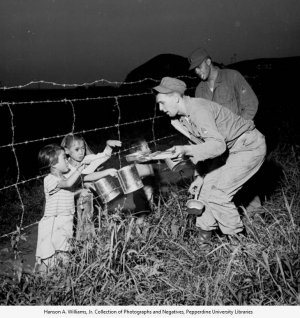You are using an out of date browser. It may not display this or other websites correctly.
You should upgrade or use an alternative browser.
You should upgrade or use an alternative browser.
History, anything goes, including pictures
- Thread starter mellowyellow
- Start date
mellowyellow
Well-known Member
Verisure
Senior Member
Yes. You've been there?Saint Barthélemy, a volcanic island fully encircled by shallow reefs, has an area of 25 square kilometres and a population of 9,961 at the Jan. 2017 census. It is the only Caribbean island that was a Swedish colony for any significant length of time.
The island of Guadeloupe and "New Sweden" (parts of Pennsylvania, New Jersey, New York, and Delaware) were also colonized by Sweden, although, as you say were not held for any significant length of time.
RnR
Member
- Location
- Gold Coast, Queensland
Thanks Pappy, very interesting. Have read about the "Trail of Tears" ... very sad.
RnR
Member
- Location
- Gold Coast, Queensland
23 April 303 – Saint George, Roman soldier and martyr dies. The event is commemorated as Saint George's Day.
Saint George (AD 256–285 to 23 April 303), according to legend, was a Roman soldier of Greek origin and officer in the Guard of Roman emperor Diocletian, who was sentenced to death for refusing to recant his Christian faith. As a Christian martyr, he later became one of the most revered saints in Christianity, and was especially venerated by the Crusaders. In his biography, as one of the Fourteen Holy Helpers and one of the most prominent military saints, he is immortalised in the myth of Saint George and the Dragon. His memorial, Saint George's Day, is traditionally celebrated on 23 April. Numerous countries, cities, professions and organisations claim Saint George as their patron.
Portrait by Hans von Kulmbach, circa 1510. The martyrdom of Saint George, by Paolo Veronese, 1564.

The flag of England is derived from the red Saint George's Cross flag now incorporated in the Union Jack, and as such, part of the Australian flag.
On 24 February 303, Diocletian issued an edict that every Christian soldier in the army should be degraded and every soldier required to offer sacrifice to the Roman gods. Seeing the edict George confronted the emperor about the edict and declared himself to be a Christian. Diocletian attempted to convert George but after failing had him arrested. George was executed by decapitation before Nicomedia's city wall, on 23 April 303.
Saint George (AD 256–285 to 23 April 303), according to legend, was a Roman soldier of Greek origin and officer in the Guard of Roman emperor Diocletian, who was sentenced to death for refusing to recant his Christian faith. As a Christian martyr, he later became one of the most revered saints in Christianity, and was especially venerated by the Crusaders. In his biography, as one of the Fourteen Holy Helpers and one of the most prominent military saints, he is immortalised in the myth of Saint George and the Dragon. His memorial, Saint George's Day, is traditionally celebrated on 23 April. Numerous countries, cities, professions and organisations claim Saint George as their patron.
Portrait by Hans von Kulmbach, circa 1510. The martyrdom of Saint George, by Paolo Veronese, 1564.

The flag of England is derived from the red Saint George's Cross flag now incorporated in the Union Jack, and as such, part of the Australian flag.
On 24 February 303, Diocletian issued an edict that every Christian soldier in the army should be degraded and every soldier required to offer sacrifice to the Roman gods. Seeing the edict George confronted the emperor about the edict and declared himself to be a Christian. Diocletian attempted to convert George but after failing had him arrested. George was executed by decapitation before Nicomedia's city wall, on 23 April 303.
RnR
Member
- Location
- Gold Coast, Queensland
23 April 1564 – William Shakespeare is born according to his traditional birthdate. He also dies on 23 April, in 1616.
William Shakespeare (23 April 1564 – 23 April 1616) was an English poet, playwright and actor, widely regarded as the greatest writer in the English language and the world's pre-eminent dramatist. He is often called England's national poet and the "Bard of Avon". His works, including collaborations, consist of approximately 39 plays, 154 sonnets, two long narrative poems and a few other verses, some of uncertain authorship. His plays have been translated into every major living language and are performed more often than those of any other playwright.
John Shakespeare's house, believed to be Shakespeare's birthplace, in Stratford-upon-Avon. The Chandos portrait, artist and authenticity unconfirmed, National Portrait Gallery in London. Shakespeare's grave, next to that of Anne Shakespeare, in the Holy Trinity Church, Stratford-on-Avon.

Shakespeare was born and brought up in Stratford-upon-Avon, Warwickshire. At the age of 18, he married Anne Hathaway, with whom he had three children: Susanna and twins Hamnet and Judith. Some time between 1585 and 1592, he began a successful career in London as an actor, writer, and part-owner of a playing company called the Lord Chamberlain's Men, later known as the King's Men. At age 49 around 1613, he appears to have retired to Stratford, where he died three years later.
William Shakespeare (23 April 1564 – 23 April 1616) was an English poet, playwright and actor, widely regarded as the greatest writer in the English language and the world's pre-eminent dramatist. He is often called England's national poet and the "Bard of Avon". His works, including collaborations, consist of approximately 39 plays, 154 sonnets, two long narrative poems and a few other verses, some of uncertain authorship. His plays have been translated into every major living language and are performed more often than those of any other playwright.
John Shakespeare's house, believed to be Shakespeare's birthplace, in Stratford-upon-Avon. The Chandos portrait, artist and authenticity unconfirmed, National Portrait Gallery in London. Shakespeare's grave, next to that of Anne Shakespeare, in the Holy Trinity Church, Stratford-on-Avon.

Shakespeare was born and brought up in Stratford-upon-Avon, Warwickshire. At the age of 18, he married Anne Hathaway, with whom he had three children: Susanna and twins Hamnet and Judith. Some time between 1585 and 1592, he began a successful career in London as an actor, writer, and part-owner of a playing company called the Lord Chamberlain's Men, later known as the King's Men. At age 49 around 1613, he appears to have retired to Stratford, where he died three years later.
RnR
Member
- Location
- Gold Coast, Queensland
23 April 2005 – The first ever YouTube video, titled "Me at the zoo", was published by user "jawed”.
YouTube was founded by Chad Hurley, Steve Chen, and Jawed Karim, who were all early employees of PayPal. According to a story that has often been repeated in the media, Hurley and Chen developed the idea for YouTube during the early months of 2005, after they had experienced difficulty sharing videos that had been shot at a dinner party at Chen's apartment in San Francisco.

The first YouTube video, titled Me at the zoo, shows co-founder Jawed Karim at the San Diego Zoo. The video was uploaded on 23 April 2005, and can still be viewed on the site. The nineteen-second video was shot by Yakov Lapitsky at the San Diego Zoo, featuring Karim in front of the elephants in their old exhibit in Elephant Mesa, professing his interest in their "really, really, really long trunks".
YouTube was founded by Chad Hurley, Steve Chen, and Jawed Karim, who were all early employees of PayPal. According to a story that has often been repeated in the media, Hurley and Chen developed the idea for YouTube during the early months of 2005, after they had experienced difficulty sharing videos that had been shot at a dinner party at Chen's apartment in San Francisco.

The first YouTube video, titled Me at the zoo, shows co-founder Jawed Karim at the San Diego Zoo. The video was uploaded on 23 April 2005, and can still be viewed on the site. The nineteen-second video was shot by Yakov Lapitsky at the San Diego Zoo, featuring Karim in front of the elephants in their old exhibit in Elephant Mesa, professing his interest in their "really, really, really long trunks".
Verisure
Senior Member
On 14 May, 1945 the German submarine U-234 surrendered to the American navy. Onboard the U-234 was uranium oxide and other technological weapons that were en route to Japan in order to help the Japanese build “the bomb” for use in striking the mainland of the USA. Also onboard were civilian engineers and scientists and two Japanese naval officers, all there to assist Japan in their nuclear endeavors. Rather than surrender themselves to the Americans, the Japanese officers onboard committed “harakiri”.
NOTE: Japan finally did receive the bomb-making material in the form of the attacks on Hiroshima/Nagasaki.
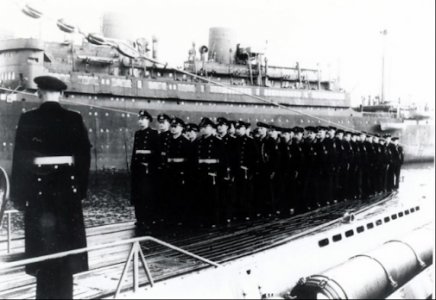
NOTE: Japan finally did receive the bomb-making material in the form of the attacks on Hiroshima/Nagasaki.

RnR
Member
- Location
- Gold Coast, Queensland
Really interesting Verisure ... had never heard about that before.On 14 May, 1945 the German submarine U-234 surrendered to the American navy. Onboard the U-234 was uranium oxide and other technological weapons that were en route to Japan in order to help the Japanese build “the bomb” for use in striking the mainland of the USA. Also onboard were civilian engineers and scientists and two Japanese naval officers, all there to assist Japan in their nuclear endeavors. Rather than surrender themselves to the Americans, the Japanese officers onboard committed “harakiri”.
NOTE: Japan finally did receive the bomb-making material in the form of the attacks on Hiroshima/Nagasaki.
View attachment 161350
Verisure
Senior Member
The official American version is that the US already had all it needed to make the bomb and that the ingredients they ripped off from the Nazis (en route to Japan) only gave them more of what they already had. But Washington is in the habit of spinning their version of history so I'm not convinced. Anyway, if the incident didn't give the US an edge then why is the story of the U-234 so little known? One thing is for sure: Neither the Nazis, the Japanese, or the Americans had a finished bomb "done and dusted" at the time of the U-234's surrender, so ....... did the US only profit from the ingredients found on the U-234 or did the technological data also give them something they didn't have?Really interesting Verisure ... had never heard about that before.
mellowyellow
Well-known Member
mellowyellow
Well-known Member
mellowyellow
Well-known Member
No verisure, I just wanted to know where it was. So much left to learn when you delve into history.Yes. You've been there?
The island of Guadeloupe and "New Sweden" (parts of Pennsylvania, New Jersey, New York, and Delaware) were also colonized by Sweden, although, as you say were not held for any significant length of time.
RnR
Member
- Location
- Gold Coast, Queensland
24 April 1479 BC – Thutmose III ascends to the throne of Egypt, although power effectively shifts to Hatshepsut.
Thutmose III was the sixth pharaoh of the Eighteenth Dynasty. During the first 22 years of Thutmose's reign, he was co-regent with his stepmother and aunt, Hatshepsut, who was named the pharaoh. While he was shown first on surviving monuments, both were assigned the usual royal names and insignia and neither is given any obvious seniority over the other. He served as the head of her armies. After the death of Hatshepsut and Thutmosis III's later rise to pharaoh of the kingdom, he created the largest empire Egypt had ever seen; no fewer than 17 campaigns were conducted and he conquered from Niya in North Syria to the Fourth Cataract of the Nile in Nubia.
Thutmosis III statue in Luxor Museum. Scenes from Thutmose III’s tomb discovered by Victor Loret in 1898 in the Valley of the Kings and the Temple of Thutmose III. Thutmose III smiting his enemies, relief on the seventh pylon in Karnak. Annals of Tuthmoses III at Karnak depicting him standing before the offerings made to him after his foreign campaigns.

During the final two years of his reign, he appointed his son and successor, Amenhotep II, as his junior co-regent. His firstborn son and heir to the throne, Amenemhat, predeceased Thutmose III. When Thutmose III died, he was buried in the Valley of the Kings, as were the rest of the kings from this period in Egypt.
Thutmose III was the sixth pharaoh of the Eighteenth Dynasty. During the first 22 years of Thutmose's reign, he was co-regent with his stepmother and aunt, Hatshepsut, who was named the pharaoh. While he was shown first on surviving monuments, both were assigned the usual royal names and insignia and neither is given any obvious seniority over the other. He served as the head of her armies. After the death of Hatshepsut and Thutmosis III's later rise to pharaoh of the kingdom, he created the largest empire Egypt had ever seen; no fewer than 17 campaigns were conducted and he conquered from Niya in North Syria to the Fourth Cataract of the Nile in Nubia.
Thutmosis III statue in Luxor Museum. Scenes from Thutmose III’s tomb discovered by Victor Loret in 1898 in the Valley of the Kings and the Temple of Thutmose III. Thutmose III smiting his enemies, relief on the seventh pylon in Karnak. Annals of Tuthmoses III at Karnak depicting him standing before the offerings made to him after his foreign campaigns.

During the final two years of his reign, he appointed his son and successor, Amenhotep II, as his junior co-regent. His firstborn son and heir to the throne, Amenemhat, predeceased Thutmose III. When Thutmose III died, he was buried in the Valley of the Kings, as were the rest of the kings from this period in Egypt.
RnR
Member
- Location
- Gold Coast, Queensland
24 April 1800 – The United States Library of Congress is established when President John Adams signs legislation to appropriate $5,000 to purchase books.
The Library of Congress is the research library that officially serves the United States Congress and is the de facto national library of the United States. It is the oldest federal cultural institution in the United States. The Library is housed in three buildings on Capitol Hill in Washington, D.C. Its "collections are universal, not limited by subject, format, or national boundary, and include research materials from all parts of the world and in more than 450 languages. Two-thirds of the books it acquires each year are in languages other than English.
The Library of Congress in 1902. Main reading room at the Library of Congress.

James Madison is credited with the idea for creating a congressional library, first making such a proposition in 1783. The Library of Congress was established 24 April 1800, when President John Adams signed an act of Congress providing for the transfer of the seat of government from Philadelphia to the new capital city of Washington. Part of the legislation appropriated $5,000 "for the purchase of such books as may be necessary for the use of Congress ..., and for fitting up a suitable apartment for containing them”. Books were ordered from London and the collection, consisting of 740 books and 3 maps, was housed in the new Capitol.
Today the Library of Congress claims to be the largest library in the world.
The Library of Congress is the research library that officially serves the United States Congress and is the de facto national library of the United States. It is the oldest federal cultural institution in the United States. The Library is housed in three buildings on Capitol Hill in Washington, D.C. Its "collections are universal, not limited by subject, format, or national boundary, and include research materials from all parts of the world and in more than 450 languages. Two-thirds of the books it acquires each year are in languages other than English.
The Library of Congress in 1902. Main reading room at the Library of Congress.

James Madison is credited with the idea for creating a congressional library, first making such a proposition in 1783. The Library of Congress was established 24 April 1800, when President John Adams signed an act of Congress providing for the transfer of the seat of government from Philadelphia to the new capital city of Washington. Part of the legislation appropriated $5,000 "for the purchase of such books as may be necessary for the use of Congress ..., and for fitting up a suitable apartment for containing them”. Books were ordered from London and the collection, consisting of 740 books and 3 maps, was housed in the new Capitol.
Today the Library of Congress claims to be the largest library in the world.
RnR
Member
- Location
- Gold Coast, Queensland
24 April 1912 – The government of New South Wales grants 43 acres north of Sydney Harbour for the construction of a zoological garden, later known as Taronga Zoo.
The first public zoo in New South Wales officially opened in Sydney in 1884 on a site known as Billy Goat Swamp in Moore Park, operated by the Zoological Society of NSW which was founded in March 1879. A new site for the zoo was sought. On 24 April 1912 the NSW Government granted 43 acres of land north of the harbour which were part of Ashton Park. Another 9 acres were granted in April 1916. In 1913, Management of the zoo passed to a Trust named the New Zoological Gardens Trust which became the Taronga Zoological Park Trust.
The gates opened on 7 October 1916.

The first public zoo in New South Wales officially opened in Sydney in 1884 on a site known as Billy Goat Swamp in Moore Park, operated by the Zoological Society of NSW which was founded in March 1879. A new site for the zoo was sought. On 24 April 1912 the NSW Government granted 43 acres of land north of the harbour which were part of Ashton Park. Another 9 acres were granted in April 1916. In 1913, Management of the zoo passed to a Trust named the New Zoological Gardens Trust which became the Taronga Zoological Park Trust.
The gates opened on 7 October 1916.

RnR
Member
- Location
- Gold Coast, Queensland
24 April 1990 – The Hubble Space Telescope is launched from Space Shuttle Discovery.
Space telescopes were proposed as early as 1923. Hubble was first funded in the 1970s. After a long program of development, in early 1986, the planned launch date of October that year of the Hubble Space Telescope looked feasible, but the Challenger accident brought the U.S. space program to a halt, grounding the Space Shuttle fleet and forcing the launch of Hubble to be postponed for several years. Finally on 24 April 1990, shuttle mission STS-31 saw Discovery launch the telescope successfully into its planned orbit.
Discovery STS-31 lifts off, carrying Hubble into orbit, 24 April 1990. Hubble being deployed from Discovery. One of Hubble's most famous images, "Pillars of Creation" stars forming in the Eagle Nebula, 2014.

Still in operation, although not the first space telescope, Hubble is one of the largest and most versatile, and is well known as both a vital research tool and a public relations boon for astronomy. Hubble is the only telescope designed to be serviced in space by astronauts. After launch by Space Shuttle Discovery in 1990, five subsequent Space Shuttle missions repaired, upgraded, and replaced systems on the telescope, including all five of the main instruments.
Space telescopes were proposed as early as 1923. Hubble was first funded in the 1970s. After a long program of development, in early 1986, the planned launch date of October that year of the Hubble Space Telescope looked feasible, but the Challenger accident brought the U.S. space program to a halt, grounding the Space Shuttle fleet and forcing the launch of Hubble to be postponed for several years. Finally on 24 April 1990, shuttle mission STS-31 saw Discovery launch the telescope successfully into its planned orbit.
Discovery STS-31 lifts off, carrying Hubble into orbit, 24 April 1990. Hubble being deployed from Discovery. One of Hubble's most famous images, "Pillars of Creation" stars forming in the Eagle Nebula, 2014.

Still in operation, although not the first space telescope, Hubble is one of the largest and most versatile, and is well known as both a vital research tool and a public relations boon for astronomy. Hubble is the only telescope designed to be serviced in space by astronauts. After launch by Space Shuttle Discovery in 1990, five subsequent Space Shuttle missions repaired, upgraded, and replaced systems on the telescope, including all five of the main instruments.
Verisure
Senior Member
I lived near that wall during the mid-late 1970's.A young West Berlin couple climb up the Wall to talk to relatives through an open window in an East Berlin apartment block, 1960s
View attachment 161482
Verisure
Senior Member
... and one lifetime isn't nearly enough........ So much left to learn when you delve into history.
Verisure
Senior Member
One of the most popular sights at Australian zoos are the white swans, theirs' being black.24 April 1912 – The government of New South Wales grants 43 acres north of Sydney Harbour for the construction of a zoological garden, later known as Taronga Zoo.
The first public zoo in New South Wales officially opened in Sydney in 1884 on a site known as Billy Goat Swamp in Moore Park, operated by the Zoological Society of NSW which was founded in March 1879. A new site for the zoo was sought. On 24 April 1912 the NSW Government granted 43 acres of land north of the harbour which were part of Ashton Park. Another 9 acres were granted in April 1916. In 1913, Management of the zoo passed to a Trust named the New Zoological Gardens Trust which became the Taronga Zoological Park Trust.
The gates opened on 7 October 1916.

mellowyellow
Well-known Member
Oh, I bet you have a story to tell Verisure, would love to hear it some time.I lived near that wall during the mid-late 1970's.
Verisure
Senior Member
I wouldn't know where to begin.Oh, I bet you have a story to tell Verisure, would love to hear it some time.
mellowyellow
Well-known Member
The remains of a Russian astronaut Vladimir Komarov, who fell from space and landed in Russia, 1967. Colourized.
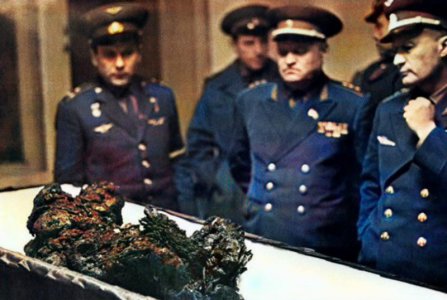
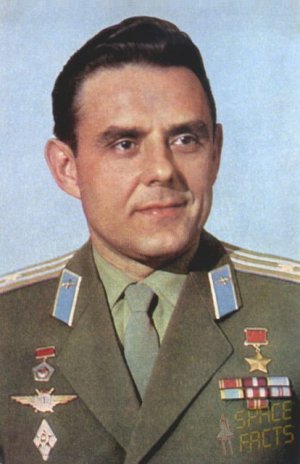
......But the rush to lead space exploration also handed the Soviet Union a more tragic place in history books: the first space-flight fatality, when cosmonaut Vladimir Komarov’s spaceship slammed into Earth upon re-entry in 1967…
https://www.thevintagenews.com/2018/02/11/man-who-fell-from-space-2/


......But the rush to lead space exploration also handed the Soviet Union a more tragic place in history books: the first space-flight fatality, when cosmonaut Vladimir Komarov’s spaceship slammed into Earth upon re-entry in 1967…
https://www.thevintagenews.com/2018/02/11/man-who-fell-from-space-2/
RnR
Member
- Location
- Gold Coast, Queensland
Anzac Day

Since 1916 the anniversary of the landings at Gallipoli on 25 April 1915 has been commemorated as Anzac Day.
More: History of Anzac Day, Australian War Memorial.

Since 1916 the anniversary of the landings at Gallipoli on 25 April 1915 has been commemorated as Anzac Day.
More: History of Anzac Day, Australian War Memorial.
mellowyellow
Well-known Member
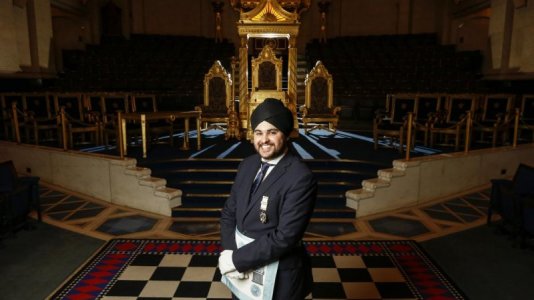
Amandeep Bansel, 21
Set in their ways for 300 years, the Freemasons are opening a lodge aimed at young people to combat a slump in membership.
Having once boasted as many as half a million brothers in the years after the war — including Sir Winston Churchill and the Duke of Edinburgh — membership has fallen to 192,818.
The lodge, which will open this year, will be run entirely by young members with the three leading positions — secretary, treasurer and director of the ceremony — to be men under 35.
Its activities will have an emphasis on environmental and mental health initiatives. It will also hold more social events than other traditional lodges. Source: The Times





